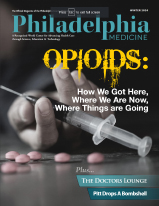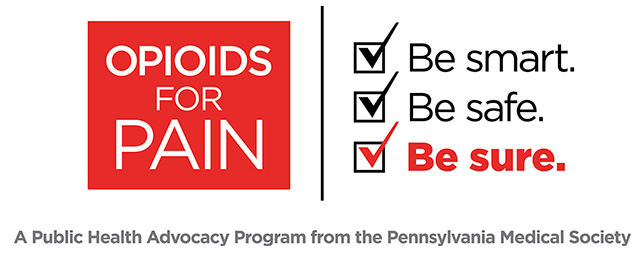On May 4, 2020, the Pennsylvania Department of Health released the following updates based on guidance released by the Centers of Disease Control and Prevention (CDC) on May 3, 2020, for discontinuation of isolation for persons with COVID-19 not in healthcare settings:
Summary:
- Discontinuing home isolation for symptomatic persons with COVID-19 should be based on local circumstances and can be symptom-based or test-based.
- Using the symptom-based strategy, DOH is recommending that persons with COVID-19 under isolation not in healthcare settings be released from isolation after a minimum of 10 days after symptom onset and after 72 hours of being afebrile and feeling well.
- Discontinuing home isolation for asymptomatic persons with COVID-19 should be based on local circumstances and can be time-based or test-based.
- Using the time-based strategy, persons who tested positive for COVID-19 who have not had symptoms may discontinue isolation after 10 days have passed since the date the positive specimen was collected.
This guidance is based on available information about COVID-19 and subject to change as additional information becomes available.
These recommendations will prevent most but may not prevent all instances of secondary spread. The risk of transmission after recovery, is likely very substantially less than that during illness.
For Persons with COVID-19 in Home Isolation:
The decision to discontinue home isolation for persons with confirmed or suspected COVID-19 should be made in the context of local circumstances, including availability of testing supplies. Options include a symptom-based (i.e., time-since-illness-onset and time-since-recovery strategy) or a test-based strategy. Of note, there have been reports of prolonged detection of RNA without direct correlation to viral culture.
1). Symptom-Based Strategy
Persons with COVID-19 who have symptoms and were directed to care for themselves at home may discontinue isolation under the following conditions:
- At least 3 days (72 hours) have passed since recovery defined as resolution of fever without the use of fever-reducing medications and improvement in respiratory symptoms (e.g., cough, shortness of breath); and,
- At least 10 days have passed since symptoms first appeared.
2). Test-Based Strategy
Persons who have COVID-19 who have symptoms and were directed to care for themselves at home may discontinue isolation under the following conditions:
- Resolution of fever without the use of fever-reducing medications and
- Improvement in respiratory symptoms (e.g., cough, shortness of breath), and
- Negative results of an FDA Emergency Use Authorized COVID-19 molecular assay for detection of SARS-CoV-2 RNA from at least two consecutive respiratory specimens collected ≥24 hours apart (total of two negative specimens).
For Persons Who Tested Positive but have NOT had COVID-19 Symptoms in Home Isolation:
1). Time-Based Strategy
Persons with laboratory-confirmed COVID-19 who have not had any symptoms and were directed to care for themselves at home may discontinue isolation under the following conditions:
At least 10 days have passed since the date of their first positive COVID-19 diagnostic test assuming they have not subsequently developed symptoms since their positive test.
If they develop symptoms, then the symptom-based or test-based strategy should be used.
2). Test-Based Strategy
Persons with laboratory-confirmed COVID-19 who have not had any symptoms and were directed to care for themselves at home may discontinue isolation under the following conditions:
Negative results of an FDA Emergency Use Authorized COVID-19 molecular assay for detection of SARS-CoV-2 RNA from at least two consecutive respiratory specimens collected ≥24 hours apart (total of two negative specimens).
The symptom-based, time-based, and test-based strategies may result in different timeframes for discontinuation of isolation post-recovery. For all scenarios outlined above, the decision to discontinue isolation should be made in the context of local circumstances.
Note that recommendations for discontinuing isolation in persons known to be infected with COVID-19 could, in some circumstances, appear to conflict with recommendations on when to discontinue quarantine for persons known to have been exposed to COVID-19. CDC recommends 14 days of quarantine after exposure based on the time it takes to develop illness if infected. Thus, it is possible that a person known to be infected could leave isolation earlier than a person who is quarantined because of the possibility they are infected.
This recommendation will prevent most, but cannot prevent all, instances of secondary spread. The risk of transmission after recovery is likely substantially less than that during illness; recovered persons will not be shedding large amounts of virus by this point, if they are shedding at all. Employers and local public health authorities can choose to apply more stringent criteria for certain persons where a higher threshold to prevent transmission is warranted.
For certain populations, a longer timeframe after recovery may be desired to minimize the chance of prolonged shedding of replication-competent virus. Such persons include 1) healthcare personnel in close contact with vulnerable persons at high-risk for illness and death if those persons get COVID-19 and 2) persons who have conditions that might weaken their immune system which could prolong viral shedding after recovery. Such persons should consult with their healthcare provider; this might include additional PCR testing. Prolonged viral shedding has been demonstrated without direct correlation with replication competent virus.
If you have questions about this guidance, please call your local health department or 1-877-PA-HEALTH (1-877-724-3258).




